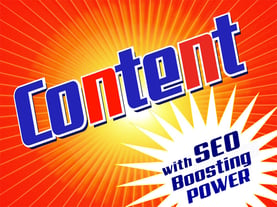
Good SEO writing and content creation goes beyond just keywords. An intelligent keyword strategy is important for ranking well in search, but there are other strategies and tricks that you should use to get your readers to click on a link and keep them engaged long enough to share your article, buy a product, or discover more of your great content.
Here are 11 basic tips (plus one bonus tip) I recommend for creating quality blog posts, copy, and other online content for people and search engines.
1. Visualize Your Audience
Businesses often find it difficult to tell people what they want to know, despite an intimate knowledge of their core products and services. Visualizing your audience inverts the business-customer relationship to allow you to see your business through their eyes.
If you are so inclined, you can write elaborate personas. At the very least, you should give your audience -
- a name
- a picture
- a backstory (age, job, interests)
Once this is done, think about the products and services you offer through the lens of your audience’s needs or goals. The questions and answers this exercise generates will provide a wealth of in-depth content.
2. Develop Your Pitch, Then Refine It
Can you get across the essence of your blog post or content page to a complete stranger in one or two lines?
You have a very small window of time in which to grab your reader’s attention, and your content needs to stand out from the noise of other search results vying for your reader’s time.
If you can’t explain your concept briefly, you should spend more time developing and refining your content topic so that your pitch is both interesting and informative.
3. Provide Value
Unfortunately, people will not read your content just because you wrote it. Let’s pretend my hypothetical reader is named Dylan Moran. (Dylan Moran happens to be one of my favorite comedians.)
Why would Dylan Moran want to read my article? What do I have to offer that he would find interesting and valuable (and preferably unique)?
Here are two content examples that communicate a lot of value in a very small amount of space:

The Buzzfeed article promises quick mood-lifting entertainment that is highly visual and easily digestible. Best of all it has pugs. In fact, there are seventeen of them.

The Walmart article, though not as cute, promises clear, practical, straight-forward advice on how to determine the right tire size for your car for those who may not be mechanically inclined.
4. Perform Keyword Research
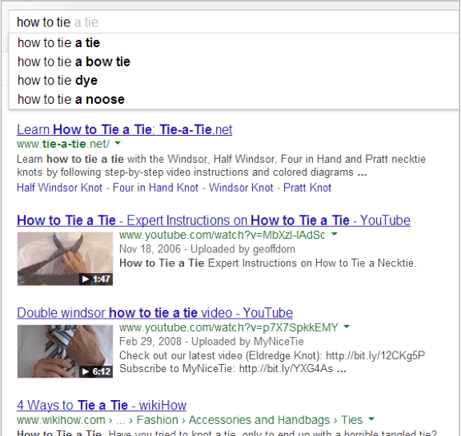 Google Search Intent in action!
Google Search Intent in action! Keyword research for website pages requires some planning. Moz has a great how-to guide for beginners.
For blog posts, light keyword research is sufficient.
You can use Google Search Intent (the suggested results that appear when you begin typing in the search box) to see what types of queries come up. Examine the search results to see who else has written about your topic. How are these articles positioned via their blog titles and summaries? Are there not enough people covering it, or too many? Perhaps the last articles were written two years ago, and there is a need for an updated point of view on the subject.
After you decide on your topic keyword, use Google's Keyword Planner to check search volume.
Tools:
- Google Search Intent
- Google Keyword Planner (formerly Google Keyword Tool) to check search volume
5. Place Keywords Strategically
Generally it’s better to have your target keywords near the beginning of your title tag and URL, but don’t sacrifice readability for the sake of keywords. Keyword stuffing is bad. Google will punish you, and your readers will ignore you.
Where to place keywords (within reason):
- Title Tag
- Meta Description
- URL
- H1 (usually the title of your blog post)
- Image file name (see step 6)
- Image alt tag (see step 6)
For a visual guide to where your target keywords should reside on your page, check out this Rand Fishkin's article for Moz.
6. Include Pictures
Images catch the reader’s eye. They are great for breaking up blocks of text. They encourage social media sharing and interest.
Images can also enhance SEO if you add your target keywords to the image file name and alt image tags. This allows search engines to “read” your images.
 photo by Jon Pinder
photo by Jon Pinder
Example:
Image file name: cute-grey-tabby-kitten.jpg
Alt tag: This cute grey tabby kitten owns the internet
What the code looks like:
<img src”cute-grey-tabby-kitten.jpg” alt=“This cute grey tabby kitten owns the internet “>
Resources:
If you are not using your own photos, please check each site for instructions on how to credit photos.
- Creative Commons (free)
- Wikimedia Commons (free)
- Public Domain (free)
- Morguefile (free)
- iStock (paid)
- Shutterstock (paid)
- Bigstock (paid)
- The Complete Guide to Using Images in Your Blog Post
7. Use Print Design Elements to Break Up Text
Photos are not the only way to break up text blocks. You can borrow design elements used by print and online magazines to make your blog posts more readable and keep readers on-page longer. These include -
- other visual media (such as videos and infographics)
- a lede paragraph that captures the reader’s by highlighting the choicest parts of your article
- subheads
- bulleted or numbered lists
- bold or italicized key words for emphasis
Note: Be aware of how your content look within the context of your site. Too many visual elements can be a turn-off as well.
8. Link to Your own Relevant Content
A reader has taken the time to click to your article and read your content. Why not get him (or her) to spend more time on your site by directing him to other articles or pages that are relevant to his interests?
9. Use a Copy Deck to Organize All Essential Elements
A copy deck is a simple document or spreadsheet that organizes all the important elements of your article.
Copy deck elements:
- Target keyword phrase
- title (character limit)
- Meta Description (character limit)
- URL
- H1
- Image file name
- Image alt tag
- Links (optional)
- Call to action
10. Proofread Your Work By Reading It Out Loud
I always recommend that you get another person to proofread your work. At the very least, you should perform spell check and read your copy out loud in order to catch mistakes. Your mind tends to fill in gaps if you are reading your own work internally.
11. Editorial Calendar
An editorial calendar can help keep your content program on track. Use it to provide an overview of what you've already published and to plan out future content pieces, including seasonal content. It is also a handy resource for cross-promotion that should be shared with creative, PR, and email marketing teams.
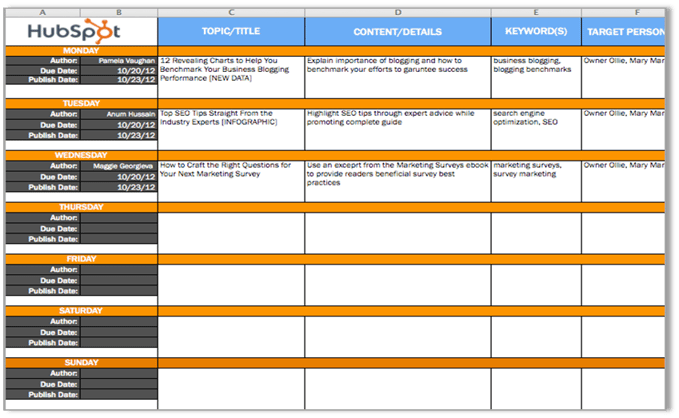 content calendar example by Hubspot
content calendar example by HubspotBonus Tip: Rich Snippets
This tip requires some coding knowledge. Have you ever wondered why some search results have photos or review stars next to the usual title tag and page description? The answer is rich snippets, a type of code that tells search engines how they should display a certain type of information (such as author or review).
The easiest type of rich snippet to implement is the author mark-up rich snippet, especially if you use Wordpress.
Resources:
Conclusion:
The driving force of your content strategy should always be the content, not the technique. Creating valuable content that engages and converts can be quite challenging. The good news is optimizing that content for SEO does not have to be a cause of added stress if you incorporate the right strategies in the content creation process.
If there are any content nerds out there, I'd love to hear what techniques and strategies you use!



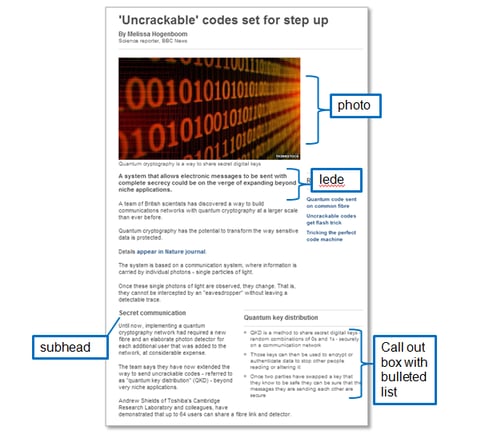
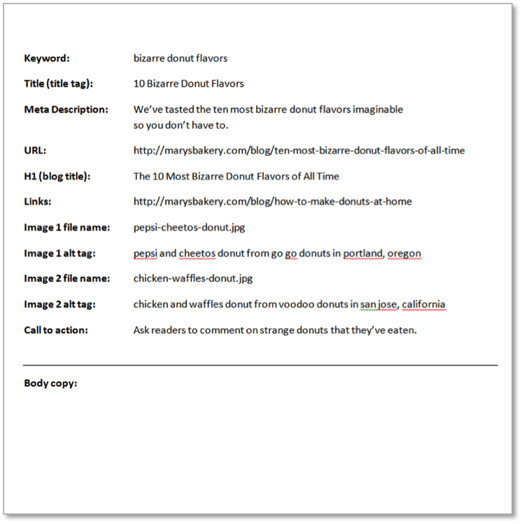
COMMENTS